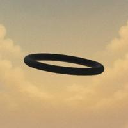-
 bitcoin
bitcoin $109523.663807 USD
-0.13% -
 ethereum
ethereum $4019.526508 USD
2.06% -
 tether
tether $1.000482 USD
0.00% -
 xrp
xrp $2.776815 USD
0.18% -
 bnb
bnb $958.942396 USD
0.12% -
 solana
solana $204.294698 USD
3.84% -
 usd-coin
usd-coin $0.999693 USD
0.00% -
 dogecoin
dogecoin $0.232115 USD
2.09% -
 tron
tron $0.338028 USD
0.84% -
 cardano
cardano $0.790920 USD
1.50% -
 hyperliquid
hyperliquid $44.871443 USD
5.60% -
 ethena-usde
ethena-usde $1.000322 USD
0.04% -
 chainlink
chainlink $21.034165 USD
2.60% -
 avalanche
avalanche $28.794831 USD
-0.54% -
 stellar
stellar $0.360466 USD
1.24%
How to choose a crypto wallet?
Crypto wallet selection depends on the specific cryptocurrencies you need to store, your desired level of security, and the accessibility and usability that align with your preferences.
Oct 04, 2024 at 08:12 am

Cryptocurrency wallets are essential for storing, sending, and receiving digital assets. With the growing popularity of cryptocurrencies, choosing the right wallet can be crucial for ensuring the security and accessibility of your funds. Here's a step-by-step guide to help you select the best crypto wallet:
1. Determine Your Needs:- Type of coins: Identify the specific cryptocurrencies you need to store. Some wallets only support certain coins.
- Security features: Consider your desired level of security, such as multi-signature support, hardware protection, or offline storage.
- Accessibility: Decide how you want to access your wallet, such as through a mobile app, web browser, or desktop software.
Hot wallets: These wallets are connected to the internet, providing easy and convenient access to your funds. However, they may be more susceptible to security breaches. Examples include:
- Binance (App)
- Coinbase Wallet (App, Web)
Cold wallets: These wallets are not connected to the internet, offering greater security against online attacks. However, they require a physical device for storage. Examples include:
- Trezor (Hardware)
- Ledger (Hardware)
- Encryption: Look for wallets that use strong encryption algorithms to protect your private keys.
- Two-factor authentication (2FA): Prefer wallets that require multiple forms of verification to prevent unauthorized access.
- Multi-signature support: Consider wallets that allow multiple people to authorize transactions, providing enhanced security.
- Read reviews and testimonials from other users to assess the quality of customer support offered by the wallet provider.
- Research the reputation of the wallet developer, ensuring they have a strong track record and are committed to security.
- User interface: Choose a wallet with an intuitive and user-friendly interface, making it easy to navigate and manage your funds.
- Cross-platform compatibility: If you use multiple devices, opt for a wallet that supports your preferred platforms.
- Once you have selected a wallet, create an account and secure it by following the provider's instructions.
- Back up your recovery phrase and store it offline in a safe place.
- Disable unused security features to reduce the risk of vulnerabilities.
- Regularly review your transactions and monitor your balance to identify any suspicious activity.
- Keep your wallet software up to date with the latest security patches.
- Consider transferring your funds to a more secure wallet if you notice any potential security breaches.
Disclaimer:info@kdj.com
The information provided is not trading advice. kdj.com does not assume any responsibility for any investments made based on the information provided in this article. Cryptocurrencies are highly volatile and it is highly recommended that you invest with caution after thorough research!
If you believe that the content used on this website infringes your copyright, please contact us immediately (info@kdj.com) and we will delete it promptly.
- Crypto Presales: Is $BFX the Next Big Thing?
- 2025-09-28 00:25:12
- Kraken's IPO Ambitions: Navigating Valuation in a Recovering Crypto Market
- 2025-09-28 00:25:12
- Bitcoin's Bumpy Ride: Navigating Risks and Potential Downturns
- 2025-09-28 00:30:01
- Sleep Token's Macabre Metal Mastery: A Deep Dive
- 2025-09-28 00:30:01
- AI-Driven Metaverse: Building Blockchain Trust in the Digital Frontier
- 2025-09-28 00:30:01
- Lyno AI: The Altcoin Presale Primed for a 1400% Surge?
- 2025-09-28 00:30:12
Related knowledge

How do I view smart contract interaction history in Coinbase Wallet?
Sep 24,2025 at 01:36am
Accessing Smart Contract Interaction History in Coinbase Wallet1. Open the Coinbase Wallet application on your mobile device and log in using your cre...

How do I use the token swap feature in Coinbase Wallet?
Sep 24,2025 at 05:00pm
Understanding Token Swaps in Coinbase Wallet1. The token swap feature in Coinbase Wallet enables users to exchange one cryptocurrency for another dire...

How do I participate in governance voting in Coinbase Wallet?
Sep 25,2025 at 01:55pm
Understanding Market Volatility in the Crypto Space1. Cryptocurrency markets are known for their extreme price fluctuations, often driven by sentiment...

How do I set up a custom RPC node in Coinbase Wallet?
Sep 24,2025 at 12:00pm
Understanding Custom RPC Nodes in Coinbase Wallet1. A custom RPC (Remote Procedure Call) node allows users to connect their Coinbase Wallet to a block...

How do I manage multiple assets in Coinbase Wallet?
Sep 23,2025 at 10:00am
Understanding Multi-Asset Support in Coinbase Wallet1. Coinbase Wallet allows users to store a wide variety of digital assets beyond just Bitcoin and ...

How do I connect Coinbase Wallet to a hardware wallet?
Sep 26,2025 at 02:54am
Connecting Coinbase Wallet to a Hardware Device1. Open the Coinbase Wallet app on your mobile device and ensure it is updated to the latest version. N...

How do I view smart contract interaction history in Coinbase Wallet?
Sep 24,2025 at 01:36am
Accessing Smart Contract Interaction History in Coinbase Wallet1. Open the Coinbase Wallet application on your mobile device and log in using your cre...

How do I use the token swap feature in Coinbase Wallet?
Sep 24,2025 at 05:00pm
Understanding Token Swaps in Coinbase Wallet1. The token swap feature in Coinbase Wallet enables users to exchange one cryptocurrency for another dire...

How do I participate in governance voting in Coinbase Wallet?
Sep 25,2025 at 01:55pm
Understanding Market Volatility in the Crypto Space1. Cryptocurrency markets are known for their extreme price fluctuations, often driven by sentiment...

How do I set up a custom RPC node in Coinbase Wallet?
Sep 24,2025 at 12:00pm
Understanding Custom RPC Nodes in Coinbase Wallet1. A custom RPC (Remote Procedure Call) node allows users to connect their Coinbase Wallet to a block...

How do I manage multiple assets in Coinbase Wallet?
Sep 23,2025 at 10:00am
Understanding Multi-Asset Support in Coinbase Wallet1. Coinbase Wallet allows users to store a wide variety of digital assets beyond just Bitcoin and ...

How do I connect Coinbase Wallet to a hardware wallet?
Sep 26,2025 at 02:54am
Connecting Coinbase Wallet to a Hardware Device1. Open the Coinbase Wallet app on your mobile device and ensure it is updated to the latest version. N...
See all articles









































































